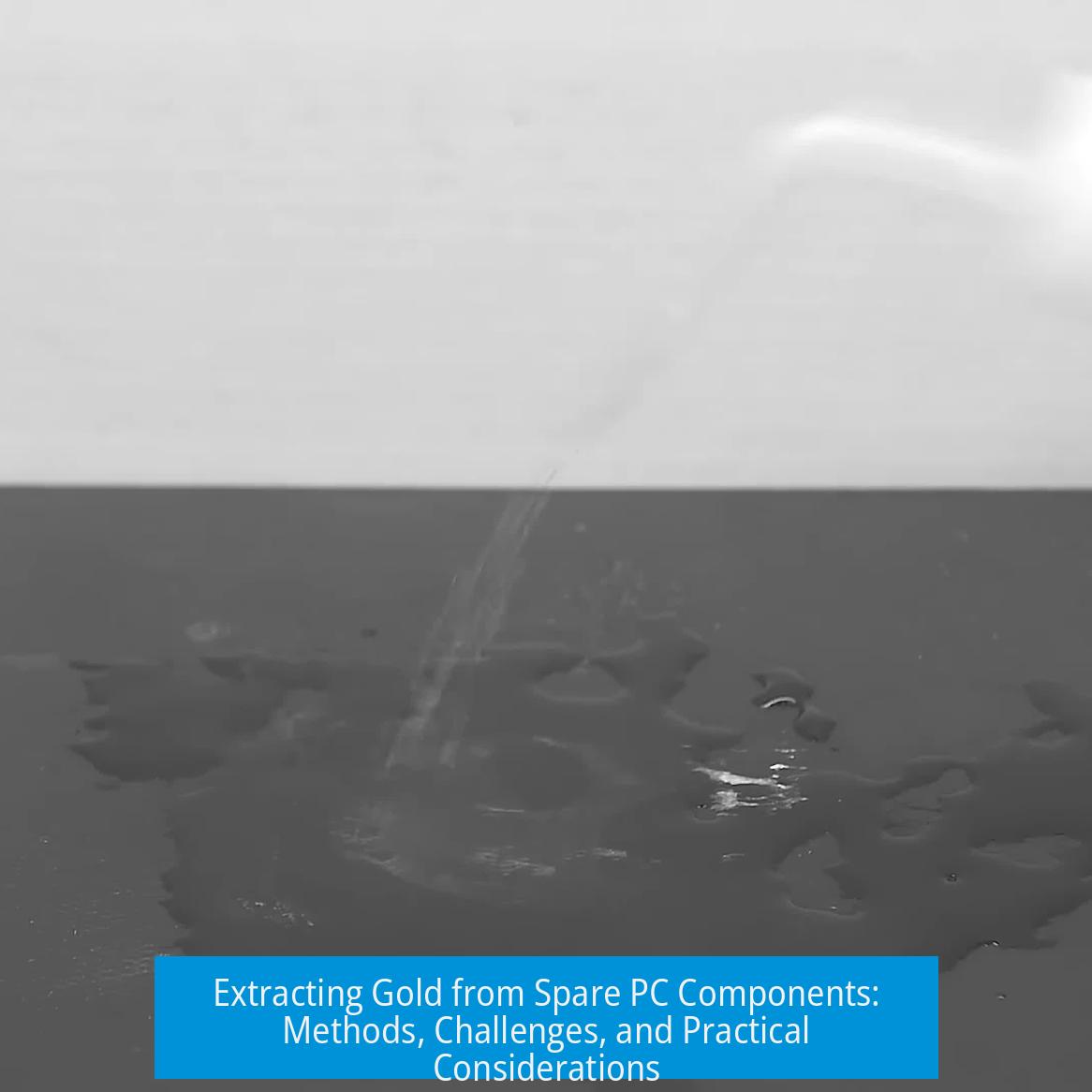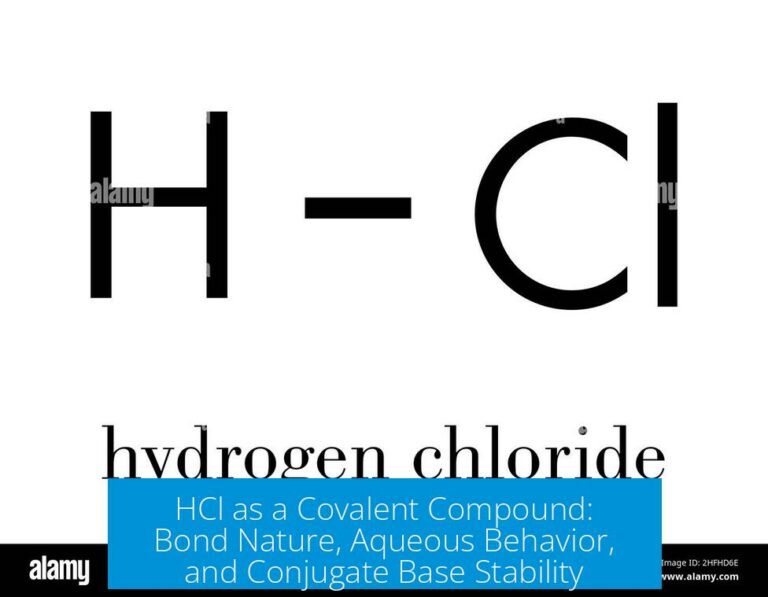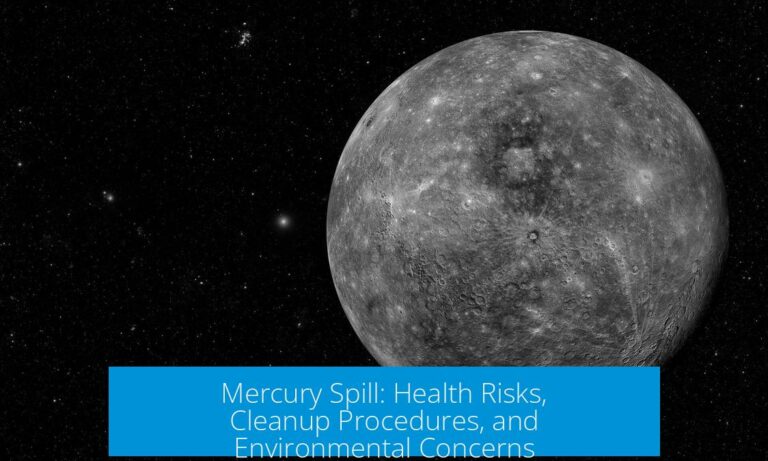Extracting Gold from Spare PC Components
Extracting gold from spare PC components is technically possible but not practical or safe for typical home setups. The amounts of gold present in electronics are very small and usually coated as thin layers or embedded inside chips. Effective extraction usually demands strong, toxic chemicals and industrial-scale operations to be economically viable.
1. Understanding the Gold Content in Electronics
Gold is used in electronics because of its excellent conductivity and resistance to corrosion. It creates reliable low-resistance connections under pressure or shear, such as in sockets and card-edge connectors. However, the gold coatings are extremely thin—typically around 300 nanometers (~0.3 microns) thick.
Even a large printed circuit board (PCB) measuring 30 by 30 cm fully coated on both sides would contain roughly one milligram of gold. Most PCBs have much less coverage. Additionally, delicate internal components like integrated circuits use gold in microscopic thread-like wires, making recovery even more difficult.
- Gold coating thickness: ~300 nm (8–11 microinches)
- Gold quantity on a 30×30 cm board: approximately 1 mg
- Gold used mainly for corrosion-resistant plating, not bulk metal
2. Challenges of Gold Extraction from Electronics
Toxicity and Safety Concerns
All practical chemical methods for gold extraction involve hazardous materials. Aqua regia, a mixture of nitric and hydrochloric acid, dissolves gold but is highly corrosive and dangerous. Cyanide-based leaching is effective but extremely toxic.
No fully safe, non-toxic chemical method exists to extract gold efficiently from circuit boards or electronic waste. Handling these substances requires specialized knowledge, protective equipment, and a controlled environment.
Economic Viability
Even with appropriate chemicals and processes, recovering gold from small quantities of electronic scrap is rarely profitable for individuals. The gold content is minimal, necessitating processing hundreds or thousands of pounds of electronic waste to obtain measurable amounts of gold.
Chemical recycling and precious metal recovery is viable mainly for large-scale industrial operations equipped to manage chemical hazards and waste disposal.
- Low volume recovery is not economically viable
- Industrial scale operations required for meaningful returns
- Cost of chemicals, equipment, and safety measures is significant
3. Methods for Extracting Gold from PC Components
3.1 Acid-Based Chemical Extraction
The most common chemical approach employs aqua regia. This powerful acid mixture dissolves gold and other metals from electronic scrap. Post-dissolution, gold is separated and purified through further chemical steps.
The process generally involves:
- Incineration or crushing of electronic components to isolate metals
- Dissolution using aqua regia to extract gold into solution
- Selective precipitation or filtration to separate gold
- Refining to obtain purified metallic gold
This method poses significant safety risks due to strong acids and fumes. It requires expertise, chemical waste treatment, and compliance with regulations on hazardous substances.
3.2 Cyanide Leaching
Gold can also be extracted by cyanide leaching, a method used industrially. Cyanide solutions dissolve gold selectively; however, cyanide is highly toxic and poses severe environmental and personal safety risks. It requires professional handling.
3.3 Alternative Less Toxic Methods
Some suggest using household chemicals such as vinegar, hydrogen peroxide, and sea salt to dissolve metals, including gold, over a longer timeframe. This method accelerates oxidation and metal dissolution with air pumps facilitating reactions.
Although safer, this approach produces impure gold and requires further chemical treatment—usually acids—to refine the gold to 24 karats purity. It is slow and inefficient compared to industrial methods.
4. Economic and Practical Considerations
Market Value vs. Content
| Material | Estimated Price | Comments |
|---|---|---|
| Gold | ~$63.50 per gram | On a large PCB (~1 mg gold), worth about $0.06 |
| Copper | ~$4.0 per pound (~454 g) | 30×30 cm copper area valued around $0.25 |
| Solder (Lead, Tin) | Varies | Likely worth more than gold on small PCBs |
Given these values, extracting gold alone from minor quantities of circuit boards is typically unprofitable. Recovering other metals or selling scrap boards to specialized recyclers can be more beneficial.
Other Precious Metals in Electronics
Electronics contain palladium, silver, and platinum along with gold. Sometimes palladium recovery from road dust or specific scrap yields better returns than gold from scrap PCBs.
5. Safety and Practical Advice
- For inexperienced individuals, chemical extraction of gold from electronics is not recommended.
- Handling strong acids and cyanide requires proper training and equipment to avoid life-threatening injuries.
- Professional recyclers invest heavily in safety measures and scale to manage costs and hazards.
- Home methods using safe chemicals produce impure gold and require further refining, limiting commercial value.
- If profit is the goal, selling scrap or recycling through certified firms is more feasible.
Summary of Key Points
- Gold in PC components is present in very small amounts, primarily as thin plating or fine wires.
- Effective gold extraction requires strong, toxic chemicals such as aqua regia or cyanide, posing major safety risks.
- Alternative mild chemical methods exist but produce impure gold and are inefficient.
- Economic viability demands large volumes of electronic waste and industrial processing facilities.
- Other metals like copper or palladium are often more viable targets for recovery from scrap.
- Safe handling, specialized equipment, and compliance with regulations are critical.
How much gold is actually in spare PC components?
Gold in electronics is mainly a thin coating on connectors or tiny wires inside chips. Even a 30×30cm board fully coated would hold only about a milligram of gold. Most PC parts have far less than that.
Can I extract gold safely at home without toxic chemicals?
Currently, gold extraction requires strong acids like aqua regia, which are toxic and dangerous. There are milder methods using vinegar and peroxide, but they don’t yield pure 24k gold without further acid treatment.
Is extracting gold from PC parts economically viable?
Due to the tiny gold amount per component, extraction is generally not profitable at small scales. Processing large volumes is needed to make a financial return, and other metals like copper may be worth more in some cases.
What methods exist for extracting gold from electronics?
- Strong acid methods (aqua regia) to dissolve non-gold metals and isolate gold.
- Non-toxic methods using vinegar, peroxide, and sea salt, but with lower purity output.
- Cyanide leaching is used industrially but is highly toxic and unsafe for amateurs.
Are there safer alternatives to chemical gold extraction?
Non-toxic techniques exist using household chemicals combined with aeration, but they produce impure gold. Industrial refining is still needed to obtain pure gold without toxic substances.
Is it worth recovering other precious metals besides gold from PC parts?
PC components contain metals like palladium, tin, and lead. Some can be more valuable or easier to extract. Recycling companies profit by processing large quantities and recovering multiple metals together.





Leave a Comment